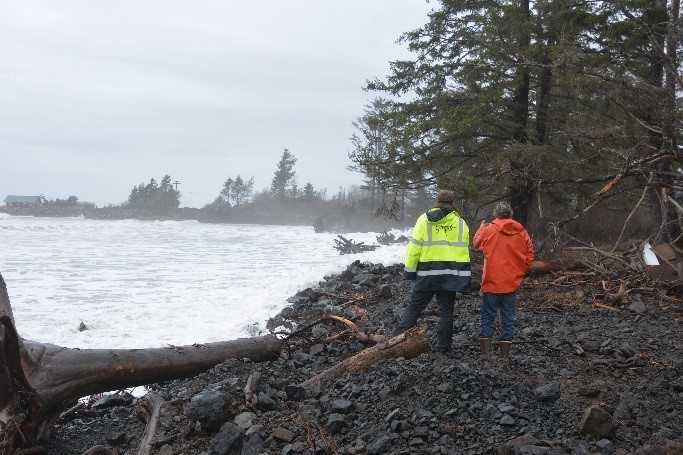[Picture: Dynamic Revetment on the beach in North Cove, WA, USA]
PhD student Paul Bayle, from the Water Informatics, Science and Engineering (WISE) Centre for Doctoral Training (CDT) and part of the WEIR research unit in the Department of Architecture and Civil Engineering, completed a field experiment investigating a recently constructed dynamic revetment structure in North Cove, Washington State, USA from the 15th to the 29th of January. A dynamic revetment is a low impact coastal structure which essentially consists of a ridge of cobbles constructed at the back of a sandy beach to provide dune protection, limit overtopping and slow erosion processes. This opportunity came out through a recently developed collaboration between Dr Christopher Blenkinsopp and Paul Bayle from the University of Bath and Dr George Kaminsky from the Washington State Department of Ecology and follows on from Dr Blenkinsopp’s successful EU Hydralab+ grant in 2017/2018 which investigated the resilience of dynamic revetments under sea level rise. This collaboration is motivated by the complementarity knowledge, study sites and equipment of both parties and aims to better understand natural composite beaches and dynamic revetments.
The community of North Cove is at great risk from coastal erosion, with the coast eroding by around 10 m per year. In order to slow this erosion, the community implemented an ad-hoc dynamic revetment structure 1 year ago. Paul and George’s team monitored the performance of the dynamic revetment structure over a 10-day period in order to assess its behaviour and performance.
In addition to the survey work, with the support and help of the local community, the team drilled and tagged 139 cobbles using Passive Integrated Transponder. These were then placed at key locations on the beach. This technique allows them to track the instrumented cobbles using Radio Frequency Identification (RFID), and understand transport patterns of the cobbles across and along the revetment. A Washington State newspaper also reported on this work - read their article here.

In addition to this, Paul’s main objective was to monitor the revetment surface changes using a 2D LIDAR (LIght Detection And Ranging). The LIDAR was set up on a pole and safely attached on the beach during 10 days. It was recording surface elevation during each high tide, so when waves interacted with the structure.

The field work was a great success in terms of data collection, networking with new collaborators and global understanding of composite beaches, dynamic revetments and more broadly, soft engineering techniques. It was also an excellent experience for Paul to see the involvement of the local community in this scientific project and work with them toward the same goal of beach stabilisation in the near future.

Special acknowledgment to WISE CDT and Santander mobility grant for funding this project.
Respond





